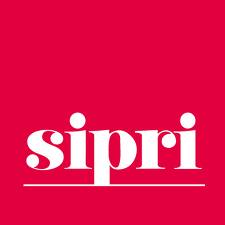(Stockholm,10 December 2018) Sales of arms and military services by theworld’s largest arms-producing and military services companies—the SIPRI Top100—totalled $398.2 billion in 2017, according to new international armsindustry data released today by the Stockholm International Peace ResearchInstitute (SIPRI).

The total for the SIPRI Top 100 in2017 is 2.5 per cent higher than in 2016 and represents anincrease of 44 per cent since 2002 (the first year for which comparable data isavailable; figures exclude China). This is the third consecutive year of growthin Top 100 arms sales.
US companies increase their share of
total Top 100 arms sales
With 42 companies listed in 2017, companies based in
the United States continued to dominate the Top 100 in 2017. Taken
together, the arms sales of US companies grew by 2.0 per cent
in 2017, to $226.6 billion, which accounted for 57 per cent of
total Top 100 arms sales. Five US companies were listed in the top 10 in
2017. ‘US companies directly benefit from the US Department of Defense’s
ongoing demand for weapons,’ says Aude Fleurant, Director of SIPRI’s Arms and
Military Expenditure Programme.
Lockheed Martin remained the world’s largest arms producer
in 2017, with arms sales of $44.9 billion. ‘The gap between Lockheed
Martin and Boeing—the two largest arms producers in the world—increased from
$11 billion in 2016 to $18 billion in 2017,’ says Fleurant.
Russia becomes the second largest
arms producer in the Top 100
The combined arms sales of Russian companies accounted for
9.5 per cent of the Top 100 total, making Russia the second
largest arms producer in the Top 100 in 2017—a position that had been
occupied by the United Kingdom since 2002. Taken together, the arms sales
of the 10 Russian companies listed in the Top 100 increased by
8.5 per cent in 2017, to $37.7 billion. ‘Russian companies have
experienced significant growth in their arms sales since 2011,’ says Siemon
Wezeman, Senior Researcher with SIPRI’s Arms and Military Expenditure
Programme. ‘This is in line with Russia’s increased spending on arms
procurement to modernize its armed forces.’
In 2017 a Russian company appeared in the top 10 for
the first time since SIPRI started publishing its annual Top 100 list.
‘Almaz-Antey, which was already Russia’s largest arms-producing company,
increased its arms sales by 17 per cent in 2017, to
$8.6 billion,’ says Alexandra Kuimova, Research Assistant with
SIPRI’s Arms and Military Expenditure Programme.
Along with Almaz-Antey, three other Russian companies in the
Top 100 increased their arms sales by more than 15 per cent: United
Engine Corporation (25 per cent), High Precision Systems
(22 per cent) and Tactical Missiles Corporation
(19 per cent).
The UK remains the largest arms
producer in Western Europe
The combined arms sales of the 24 companies in Western
Europe listed in the Top 100 increased by 3.8 per cent in 2017, to $94.9
billion, which accounted for 23.8 per cent of the Top 100 total. The UK
remained the largest arms producer in the region in 2017, with total arms sales
of $35.7 billion and seven companies listed in the Top 100. ‘The combined arms
sales of British companies were 2.3 per cent higher than in 2016,’ says
Fleurant. ‘This was largely due to increases in the arms sales of BAE Systems,
Rolls-Royce and GKN.’
BAE Systems, which is ranked fourth in the Top 100, is the
UK’s biggest arms producer. Its arms sales rose by 3.3 per cent in 2017, to
$22.9 billion.
Other notable developments
• The arms sales of Turkish companies rose
by 24 per cent in 2017. ‘This significant increase reflects Turkey’s ambitions
to develop its arms industry to fulfil its growing demand for weapons and
become less dependent on foreign suppliers,’ says Pieter Wezeman, Senior
Researcher with SIPRI’s Arms and Military Expenditure Programme.
• Taken together, the arms sales of the
four Indian companies ranked in the Top 100 totalled $7.5 billion in 2017,
representing a 1.9 per cent share of Top 100 arms sales.
• Sales of the top 15 manufacturing
companies listed in the Fortune Global 500 totalled $2311 billion in 2017. This
is almost 10 times greater than the total arms sales of the top 15 arms
producers ($231.6 billion) in 2017, and almost six times greater than the total
combined arms sales of the Top 100 ($398.2 billion).
s
The SIPRI Arms Industry Database was created in 1989. At that time it excluded data for companies in countries in Eastern Europe, including the Soviet Union. However, the current version contains data from 2002, including data for companies in Russia. Chinese companies are not included in the database due to the lack of available data on which to make a reasonable or consistent estimate of arms sales dating back to 2002.
‘Arms sales’ are defined as sales of military goods and services to military customers domestically and abroad. Unless otherwise specified, all changes are expressed in real terms. All changes between 2016 and 2017 are based on the list of companies ranked in 2017 (i.e. the annual comparison is between the same set of companies).
The SIPRI Arms Industry Database, which presents a more detailed data set for the years 2002–17, is available on SIPRI’s website.
SIPRI is an independentinternational institute dedicated to research into conflict, armaments, armscontrol and disarmament. Established in 1966, SIPRI provides data, analysis andrecommendations, based on open sources, to policymakers, researchers, media andthe interested public.
